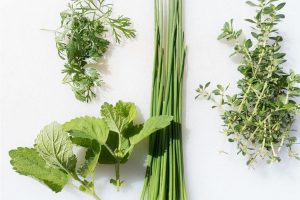
What are your Socks Made of?

Your feet support the entire weight of your body and contain multiple sweat glands. It means your feet need to be kept dry under regulated temperatures. During the manufacturing process of socks, there are two main approaches incorporated to manage moisture. The first one is the insulation approach designed to reduce perspiration and the second one is a devised method of transporting moisture from the body.
Common Sock Yarns
The process of manufacturing socks has advanced. Today, there are dyes, fiber blending, and more. If you are diabetic, your doctor must have emphasized the need to wear clothes that encourage circulation, and a knee length sock comes in handy. Because there are a lot of materials used in making socks, it is crucial that you choose a comfortable material.
Cotton
Cotton is 100 percent natural fiber with a soft and smooth feel. Even after repeated washing, this strong material stays in shape. It is less likely to shrink, is biodegradable, breathable, and retains color. Although it can withstand wear and tear, and abrasion, it can also hold moisture well. It soaks up uneven amounts of water, meaning it is not the best for people in sports.
Cotton also tends to heat up, creating the perfect environment for bacteria and blisters. If you are in sports, avoid 100 percent cotton socks. The types of cotton mostly used in socks include:
- Recycled Cotton: This is normally spun from scraps that would have otherwise been discarded after cutting or weaving.
- Organic Cotton: This is cotton grown with the absence of fertilizers and pesticides. The method used to produce this type of cotton is believed to give room for biodiversity.
- Combed Cotton: This is combed cotton that leaves straight and long fibers behind. It is one of the most popular and expensive.
- Mercerized Cotton: This cotton goes through extra processing to offer softness and luster and to also intensify dyed colors.
Wool
Wool is mostly used in cold climates and can also absorb moisture. Although prices depend on the type of wool used to manufacture the socks, quality is determined by the diameter and the length of the fibers. Finer and longer fibers are warmer. Understand that wool is anti-microbial, meaning it is resistant to odor.
Merino wool is the most common type. It is a fine grade originally derived from the merino sheep. What makes it different from other types is its luxurious softness and comfort. This type of wool is shrink–treated allowing it to hold its shape and size. It also does not itch.
Microfiber
Because it is excellent at wicking moisture away from your body, it is mostly used in the sports and medical industries. Unlike cotton, this material keeps the feet dry thereby preventing the occurrence of blisters during sports. With this material, thinner socks can be created. It is a thin yet durable material that takes up very little room in your shoes. Since it is also resistant to stain, it is easy to maintain.
Nylon
This is a popular polymer that is strong yet versatile and hard. It is bulky and thin often used in combination with other materials to produce stretchy and durable socks. This material is mostly used in modern socks to offer the stretchy feature needed in socks.
Your Socks Have Dye
Dyes used in manufacturing socks are many and different. The process of dyeing happens on the fiber which is then woven into socks. The most common dyes include:
- Natural Dyes: Natural dyes are derived from wild plants and natural materials. For a saturated color to be achieved, environmental materials are used in high quantities.
- Low-Impact Dyes: These dyes do not contain toxic substances, have high water absorption rates, and are rinsed less, meaning they are great when you want to save water.
- Mordant: A mordant is used in dyes to enable them to bond chemically to the fiber. Without it, the molecules just lie on the surface of the fiber and could be rinsed off. It is an inorganic substance great at preparing and opening up the fiber chemically to allow it to bond. Sodium chloride, aluminum salts, tannic acid, and alum are the most commonly used mordants.
When choosing socks, find out about the fabric content. Most are made from a blend of fabrics. Here, learn the most common fibers and techniques used to make your socks.
Bamboo
These are fibers extracted from natural plants. It is a breathable and soft fiber with a natural sheen on the surface and feels like cashmere or silk. Bamboo is naturally microbial, hypoallergenic, and durable.
Acrylic
Although it is man-made, acrylic is highly durable offering warmth and softness. Acrylic is an all versatile fabric that retains elasticity amidst pulling.
Cashmere
Cashmere is produced from the soft hair of Cashmere goat and offers natural and light-weight insulation. Because it is comfortable and soft, it considered a luxury fiber.
Olefin
Also referred to as polypropylene, it is a high-tech synthetic that repels water. It is commonly used alongside other layers to help in wicking away moisture from the body. Out of all man–made fibers, cashmere is the lightest.
Most Breathable and Anti-Odor Socks
With the feet containing more than 250,000 sweat glands, anyone can sweat. Normally, excessive sweating in the feet is attributed to hyperhidrosis. It can also result from hormonal changes and medications. However, wearing thick socks and those with poor fabric can cause sweating in your feet.
Choose socks with moisture wicking properties to ensure sweat is absorbed from your skin and released into the air. Such socks can help keep your feet comfortable and prevent bad odor and the growth of bacteria. Olefin, polyester, and merino wool are the best moisture wicking materials.
If you, at some point, have to treat blisters in the middle of a hike because of your wrong socks, then you know you can’t scrimp on that one piece of gear. Depending on what you want to do in your socks, knowing what they are made of can help you make a perfect choice.
Popular Articles:


Should You Get Screened for Diabetes?

Steer Clear From Diabetes in 13 Ways


Why Carbohydrate Counting Can Be Good For Diabetics

